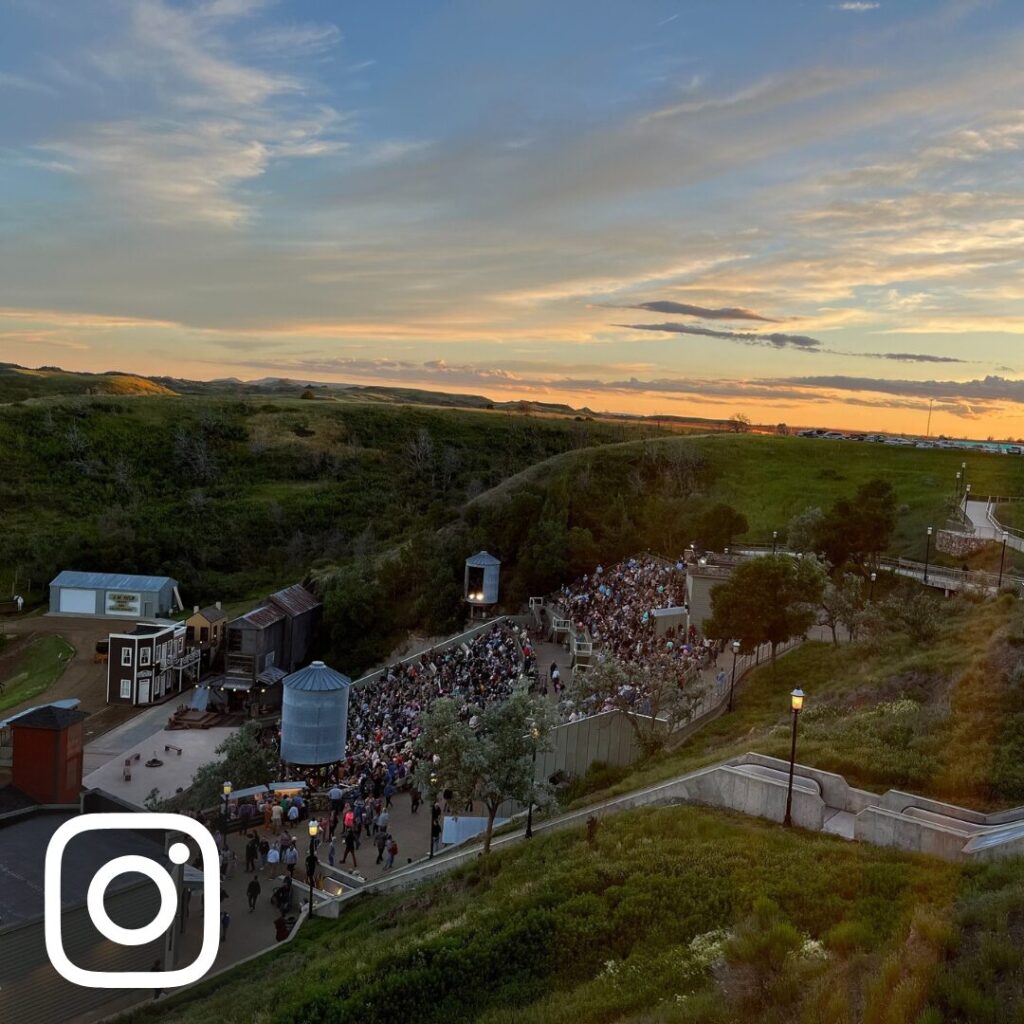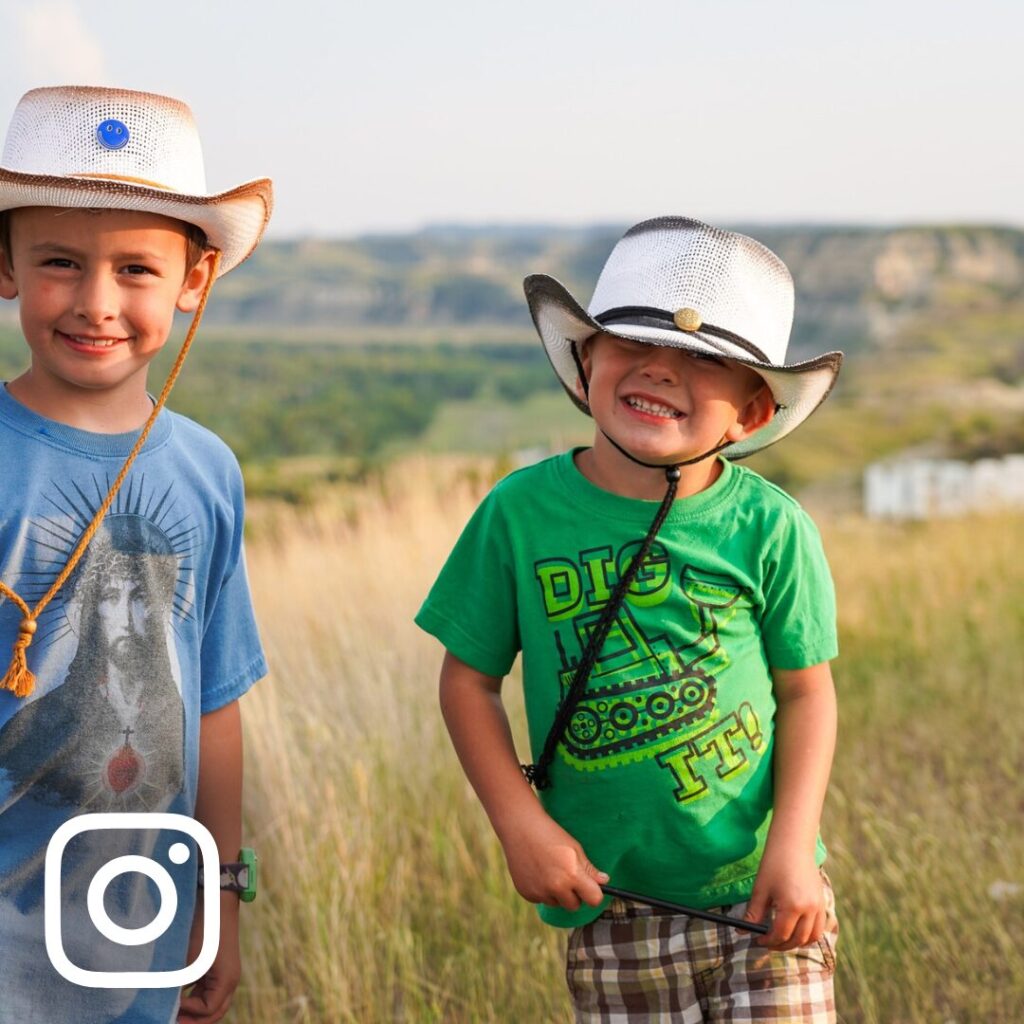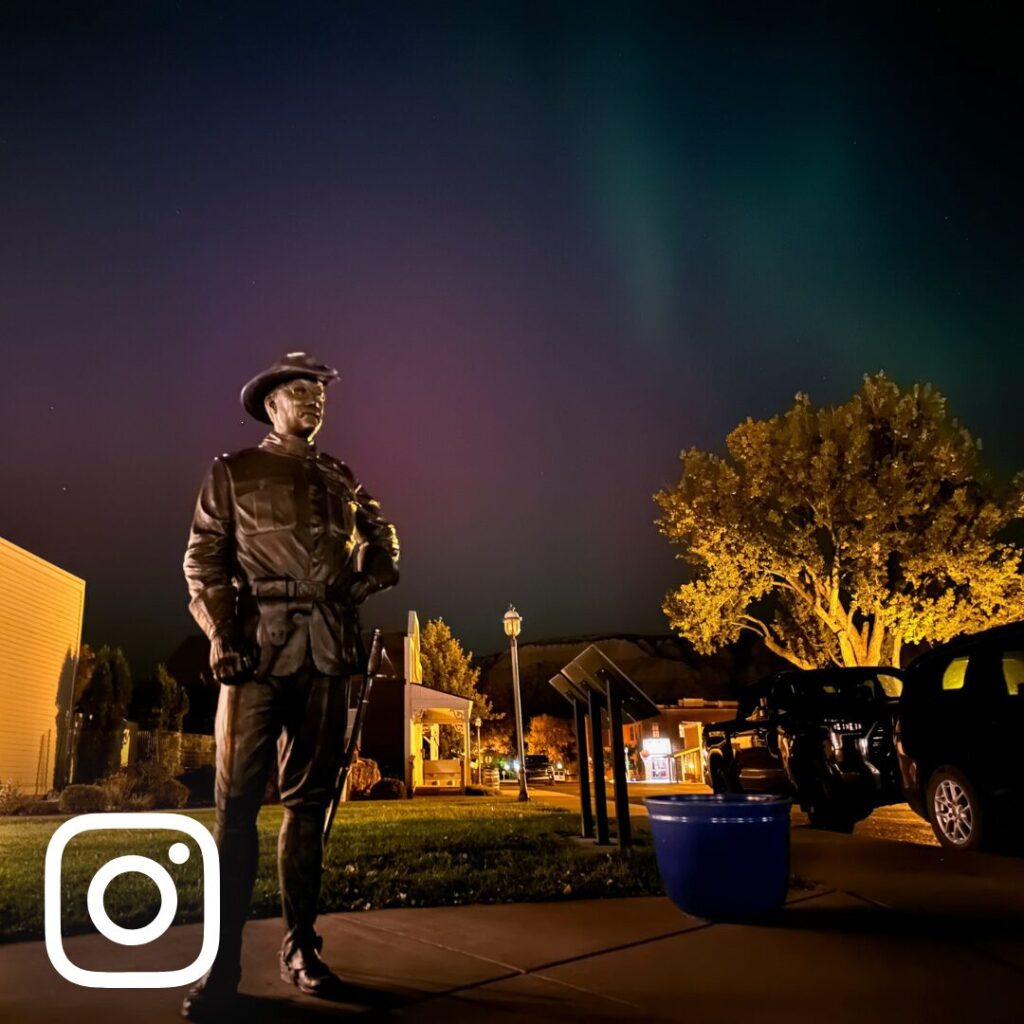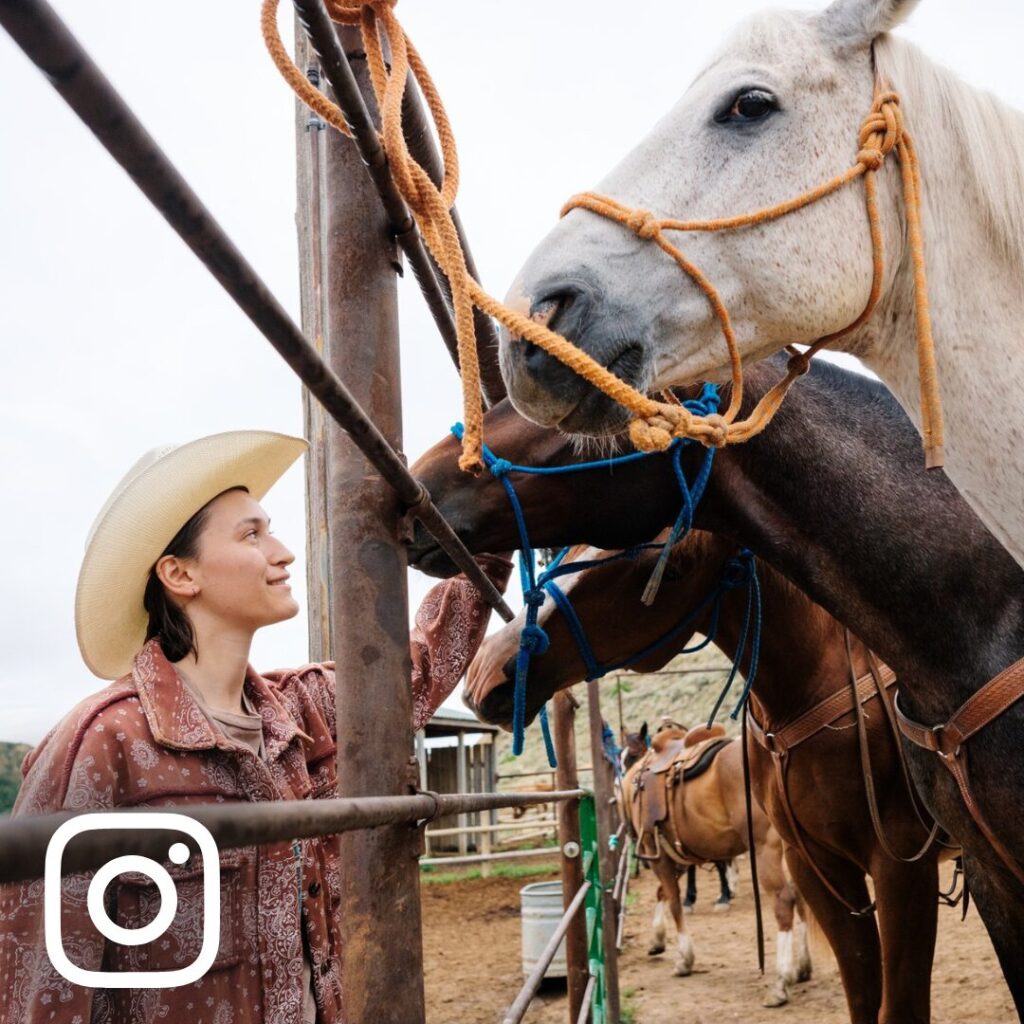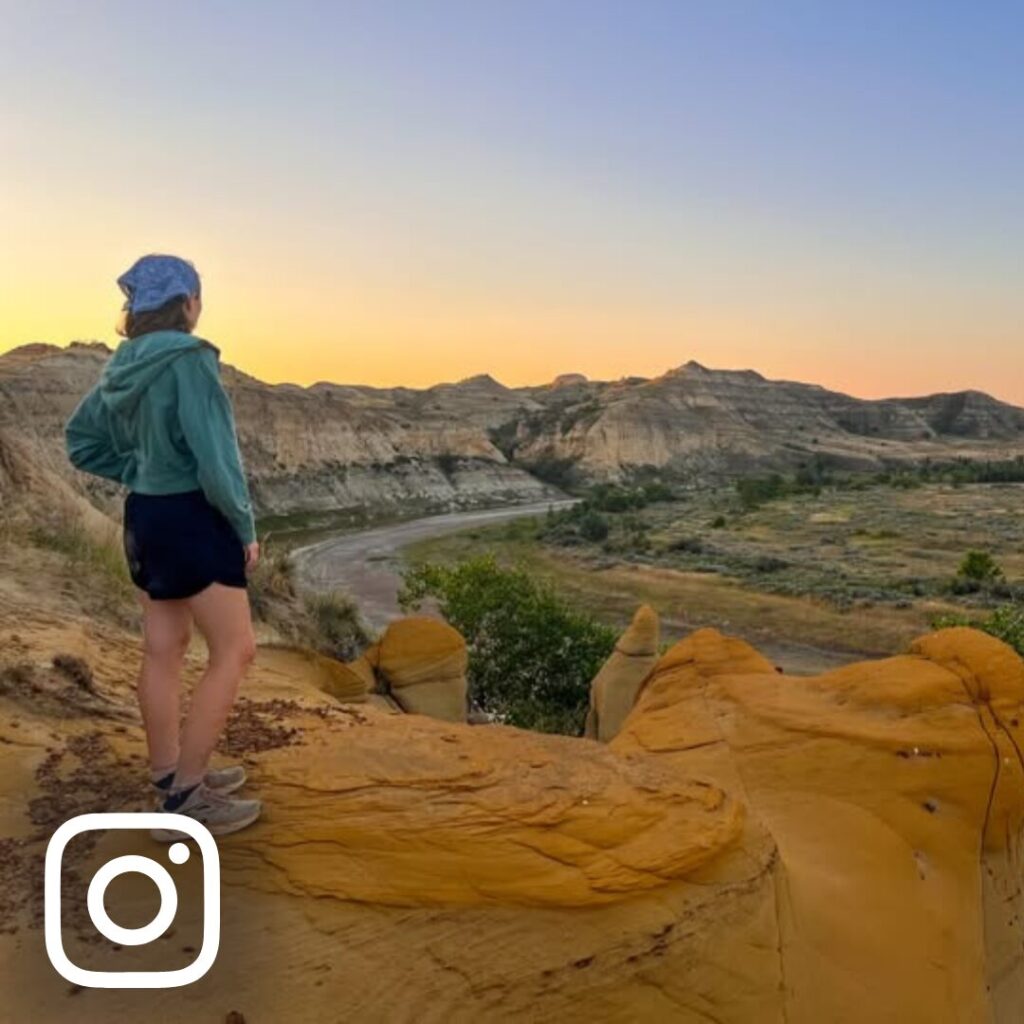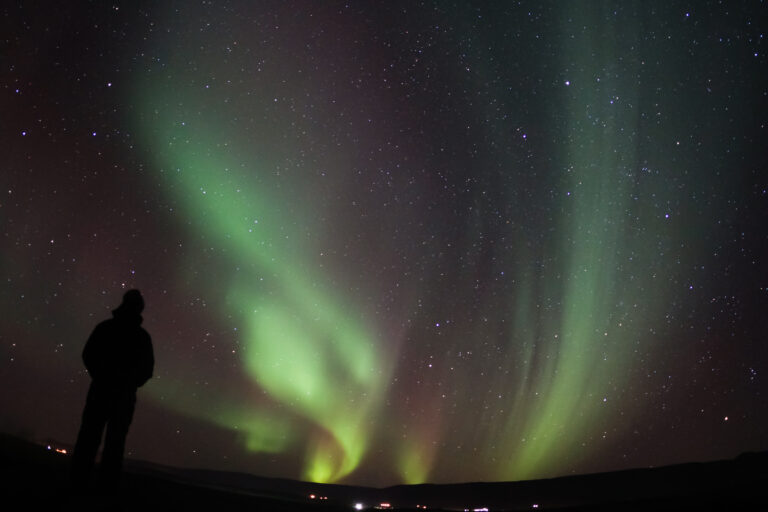5 Reasons You Should Visit Medora, North Dakota
Have you visited the charming town of Medora? It’s the perfect destination for nature lovers, small-town seekers, and family fun. Here are 5 reasons to visit Medora, North Dakota, and explore this picturesque destination.

1. Check Off Theodore Roosevelt National Park
Medora is the gateway to Theodore Roosevelt National Park, one of the most accessible parks where you can get up close and personal with incredible animals, such as bison, elk, and prairie dogs.
During my visit to TRNP, I saw over 250 bison and thousands of prairie dogs. In 35 National Park visits, never have I ever had this much access to being around and photographing wildlife.
And that’s not all – TRNP offers breathtaking views of North Dakota’s stunning landscapes from the Painted Canyon Visitor Center. If you’re lucky, you might even spot the wild horses that draw many visitors to this national park.
Make sure to visit TRNP in the morning and evening to experience the changing landscape and animal activity. And while you’re out and about, keep an eye out for the adorable prairie dogs who are known to dart across the road. They sing of the evenings.
2. Medora is a Walkable Town
Discover the charm of Medora’s downtown, where you’ll find shops, coffee houses, and wine bars. Make sure to stop by the Old Town Hall Theater to see the Teddy Roosevelt statue and learn about his influence on the community.
Shop for unique gifts at the Buffalo Gap Gift Shop and Medora Boot and Western Wear, enjoy a glass of wine at Medora Uncork’d, or savor a specialty coffee at Hatlee & Brae.
Explore the North Dakota Cowboy Hall of Fame, a well-curated museum with photo-ops, exhibits, and artifacts.
And did you know that the founder of Mr. Bubble, Harold Schafer, left a foundation to keep Medora thriving? This foundation supports local businesses, including the Medora Musical, Pitchfork Steak Fondue, Gospel Brunch, and Roughrider Hotel & Dining.
Learn about this iconic North Dakota entrepreneur’s fascinating connection to Medora, which employs and supports the community.


3. The Medora Musical: A Long-Running American Performance
Discover the incredible Medora Musical, a long-standing tradition that showcases the best of America-forward acts. Join the Burning Hills Singers on an unforgettable journey filled with music, dance, and amazing costumes, all while paying tribute to the Great American West and Teddy Roosevelt himself.
And don’t forget the breathtaking fireworks that complete this stunning performance!
One of the highlights of the show is the famous reenactment of Teddy’s charge at the battle of San Juan Hill. Experience history come alive and transport yourself to the heart of Cuba.
To make the most of your experience, consider adding the Pitchford Steak Fondue dinner option. This delicious meal features skewered meats and fondued in boiling oil and includes a mouth-watering array of sides (fruit, salad, baked beans, potatoes, coleslaw) and desserts (donut and brownies). Lemonade and coffee are included.
And all of this while enjoying the stunning Badlands views from the top of Tjaden Terrace bluff!
This option is available for an additional fee, and it’s the perfect way to complete your Medora Musical experience.
4. Experience Magical Family Fun
Another reason you should visit Medora is that it is perfect for families. The Medora Children’s Park is a themed playground that everyone will love.
Treat yourself to a delicious cone of ice cream or fudge from Medora Fudge and Ice Cream Depot.
For those seeking adventure, try zip-lining at New Manitou, the Point to Point Zipline, or mini-golf at Medora Mini Golf. Immerse yourself in the breathtaking North Dakota Badlands while playing a round of golf at the Bully Pulpit Golf Course.
Beginners can even ride horses at the Medora Riding Stables and Trail Rides. Come explore Medora’s endless entertainment opportunities!


5. Indulge in the Great Food
Explore Medora’s culinary scene and be pleasantly surprised by the trendy dishes and fresh ingredients found in this rural town.
Badlands Pizza Parlor offers delicious pizzas perfect for a picnic with buffalo herds as your backdrop, creating a magical experience.
For heavy appetizers and drink combinations, head to Little Missouri Saloon . With its outdoor deck seating, you can enjoy your meal with beautiful outdoor heaters. Don’t miss out on their freshly-made-to-order pizzas and tasty appetizers like Avocado Bites and Deep Fried Pickles.
For gourmet sandwiches, salads, and sides, Boots Bar and Grill is the place to be. Their Black and Bleu Brussels sprouts and Buffalo Cauliflower are amazing, alongside their Boots Quesadilla and satisfying burgers.
With their extra-large outdoor patio and live music, this restaurant is a favorite among locals and visitors alike. Don’t miss out on trying Medora’s culinary gems!
Need Lodging in Medora?
Sara and I stayed at the AmericInn by Wyndham Medora, a clean and comfy property with affordable rates, a fantastic indoor pool, hot tub, spacious rooms, and comfortable beds. Rooms feature mini-fridge, microwaves, and coffee makers.
The AmericInn is located within walking distance to the downtown and restaurants and offers complimentary WiFi and a tasty breakfast. I loved the warm and inviting lobby, which is perfect for enjoying a good read or catching up on your social media.

Stargazing Guide to Theodore Roosevelt National Park
by Alix Johnson | April 9, 2025
Whether you’re an amateur astronomer or just a curious stargazer, Theodore Roosevelt National Park’s wide-open skies offer a stellar opportunity to escape the hustle and bustle of everyday life and gaze into the cosmos.
Grab your telescope, a constellation guide, and get ready to experience the magic of the cosmos in one of the most beautiful places on the planet.
Stargazing Sights
What You’ll See in the Skies
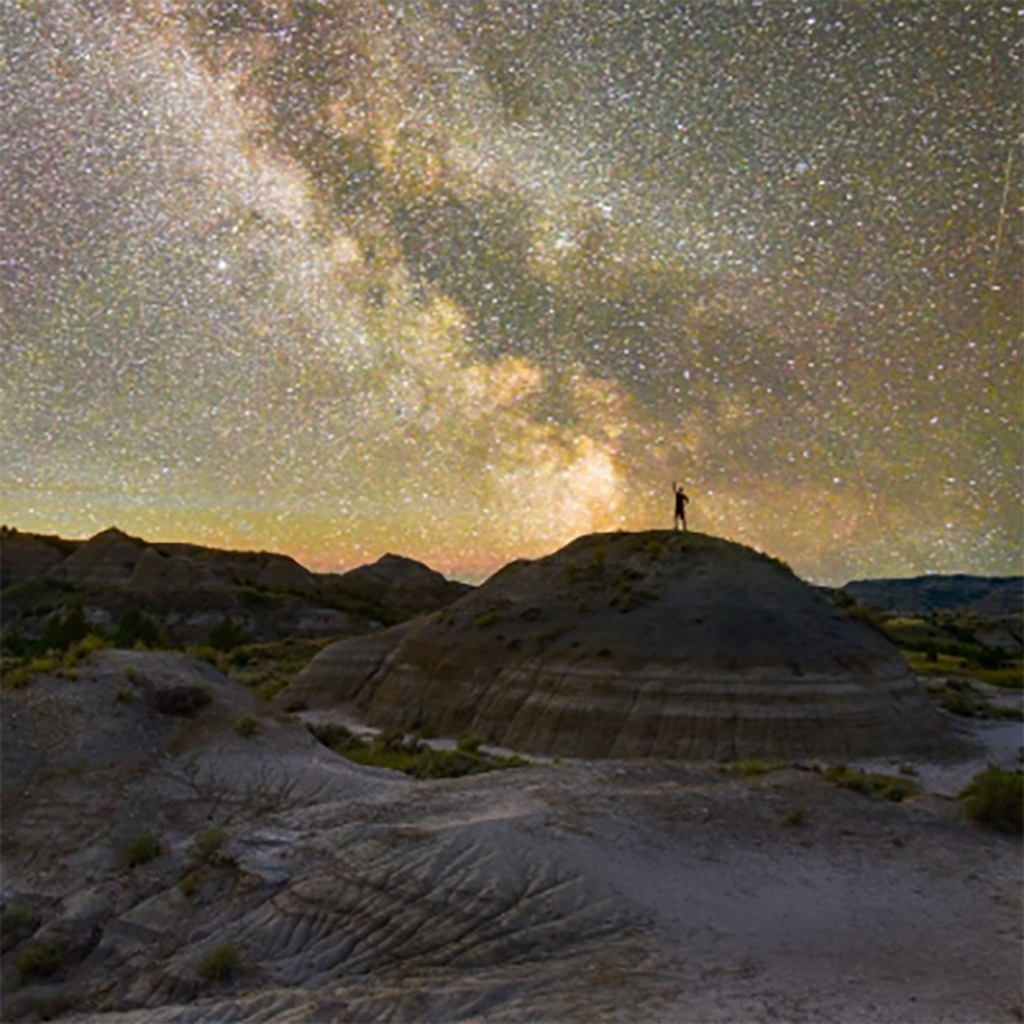
The Milky Way
On clear, moonless nights, the Milky Way takes center stage—arching across the sky in a glowing ribbon of stars.
Did you know that the Milky Way is actually a barred spiral galaxy that contains over 100 billion stars?
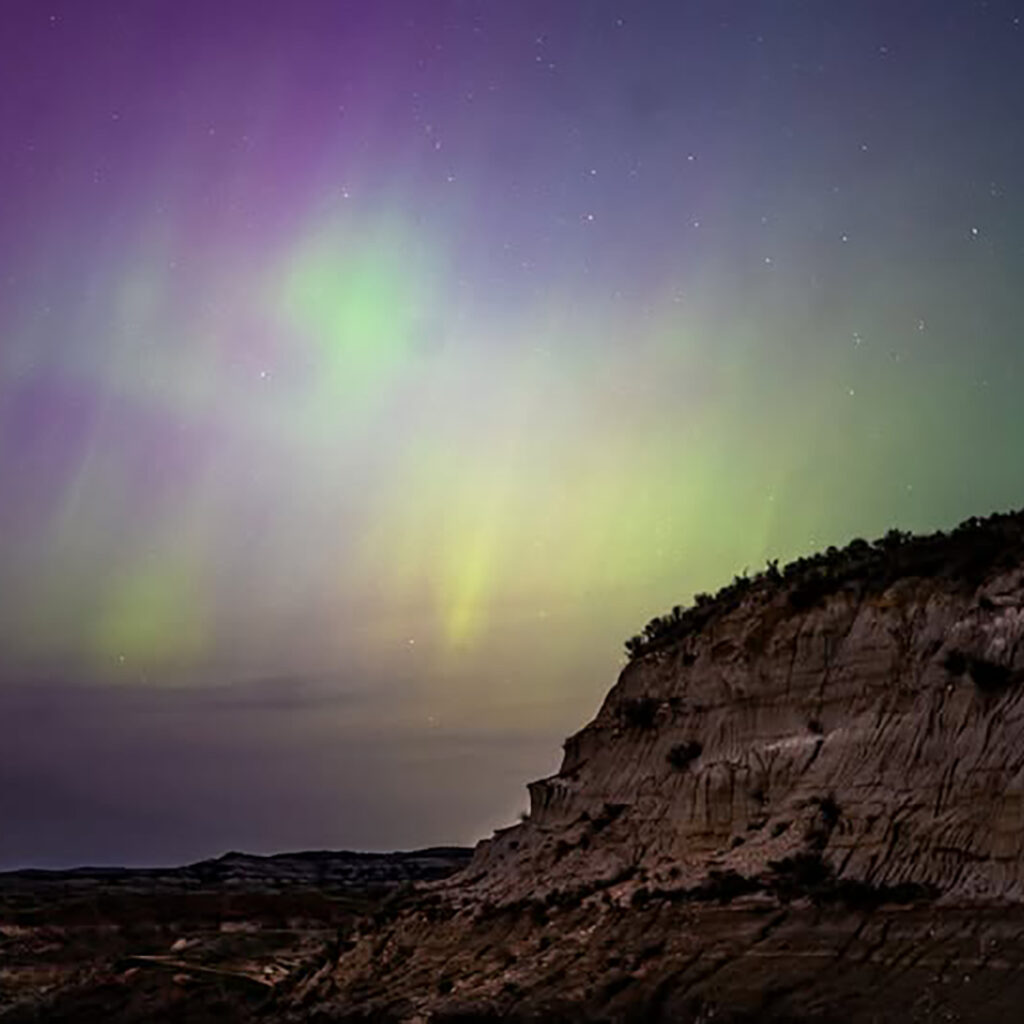
Northern Lights
The aurora borealis can sometimes be seen dancing above the North Dakota horizon. Shades of green, pink, and violet ripple across the sky in one of nature’s most unforgettable light shows.
Did you know that the Northern Lights are caused by the collision of charged particles from the sun with the Earth’s magnetic field?
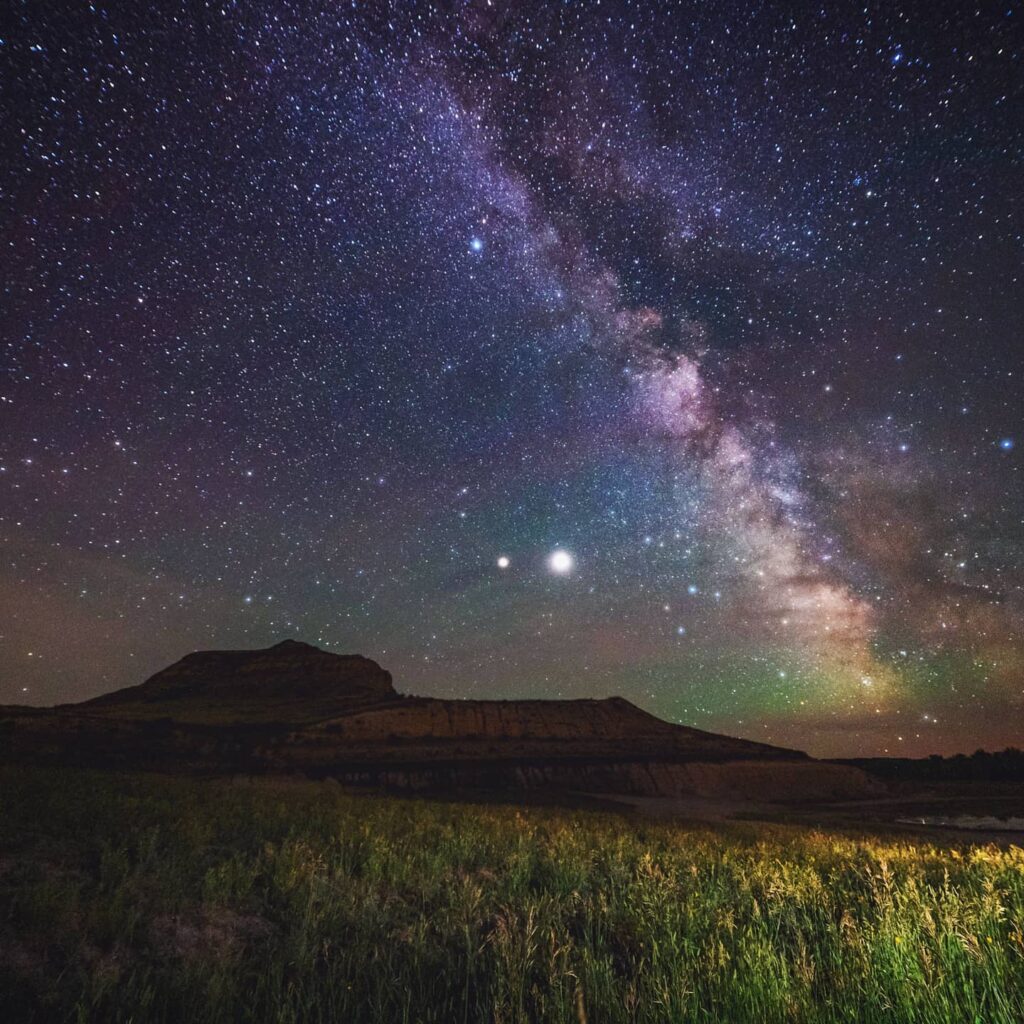
Astronomical Events
From meteor showers and comet sightings, to the International Space Station crossing overhead, you might catch more than just stars. Plan your visit around big celestial events for an even more magical experience.
Did you know that during the annual Perseid meteor shower, up to 60 meteors can be seen streaking across the sky every hour?
Top 5 Stargazing Stops
Peaceful Valley Ranch
Just 7 miles into the park, this historic ranch-turned-trailhead is a favorite stargazing spot—and home to the Annual Dakota Nights Astronomy Festival. With flat ground, big skies, and easy parking, it’s ideal for telescopes, tripods, or a simple blanket on the ground. Keep an eye out for bison that sometimes pass through at night!
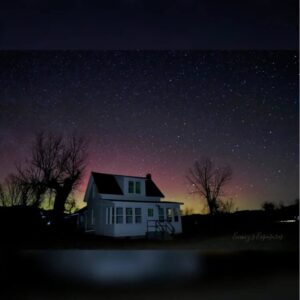
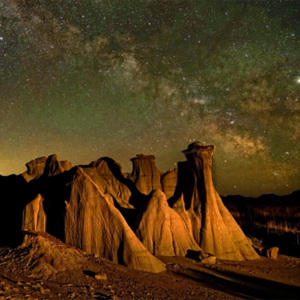
Wind Canyon
A short 0.5-mile loop leads to dramatic views over the Little Missouri River. Perched on the canyon’s edge, you’ll feel like you’re floating among the stars. This spot offers amazing photo ops of the Milky Way reflected in the water below.
Buck Hill
One of the park’s highest points offers 360° views that are perfect for sunset, starrise, and the Northern Lights. The 0.4-mile trail to the top is short but steep, worth it for wide-open skies and views stretching across Painted Canyon.
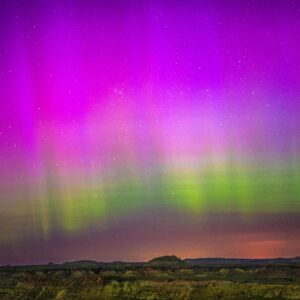
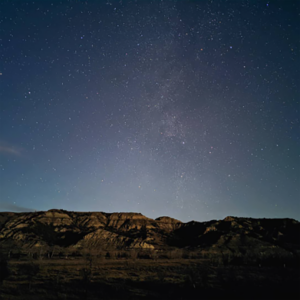
Beef Corral Bottom
Easy to access and surprisingly secluded, Beef Corral Bottom is a wide valley great for both beginners and seasoned stargazers. Roll up, park your car, and settle in for the show, no hike required.
Riverbend Overlook
Found in the North Unit, this overlook features a historic CCC shelter and jaw-dropping views over the Little Missouri River. It’s a favorite for astrophotographers thanks to its unique landscape and dark sky conditions.
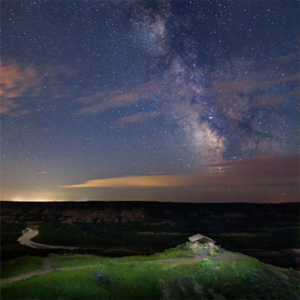
Star Studded Events
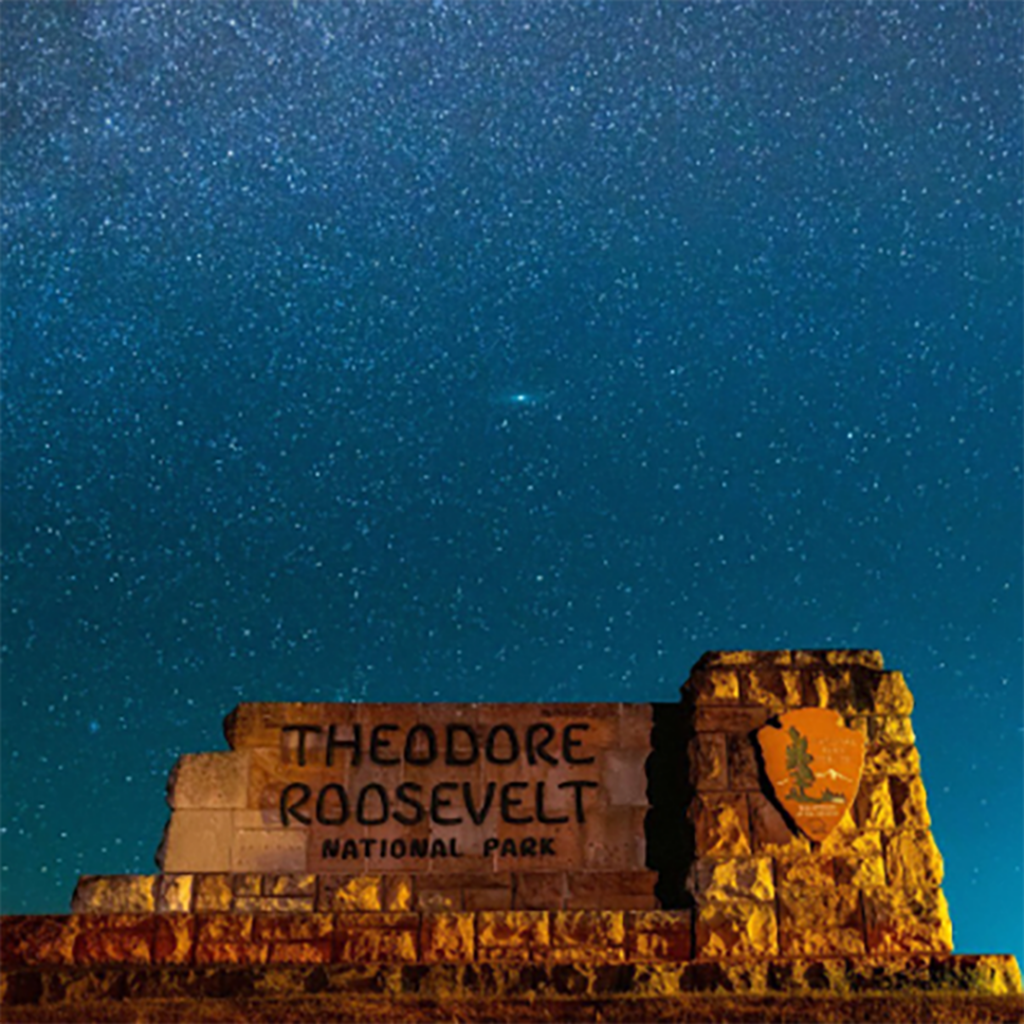
2025 Dates TBD
Every year astronomers and star gazing enthusiasts visit Theodore Roosevelt National Park for 3 days of education, story telling and viewing the night sky. Enjoy discussions of NASA missions, stories of the stars from cultures of the past and present day, and information about the park’s night time critters.
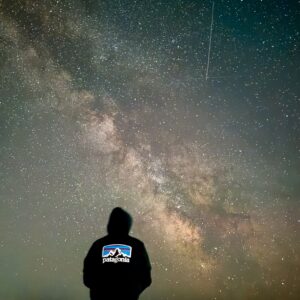
Perseid Meteor Shower
July 17 – August 24
The Perseid meteor shower is an annual event that takes place in August and is considered one of the best meteor showers of the year. It occurs when the Earth passes through the debris left behind by the Comet Swift-Tuttle, causing the debris to burn up in the Earth’s atmosphere and creating bright streaks of light in the sky. During the peak of the shower, stargazers can expect to see up to 60 meteors per hour.
In the News
Travel and Leisure
8 Places in the United States Where You May Spot the Northern Lights
This northern state is the perfect place for night sky viewing if you’re trying to see the northern lights. Scenic areas like Theodore Roosevelt National Park and….
Theodore Roosevelt National Park Is Spectacular In The Winter
Theodore Roosevelt National Park Is Spectacular In The Winter
Theodore Roosevelt National Park is spectacular in the winter. If you are not visiting national parks in the winter, why not? The beauty that you will find in America’s National Parks shines all year long, and winter is exceptional.
It won’t take you long to see what you are missing out on, as you see what the park looks like in winter. Here’s my experience in visiting Theodore Roosevelt National Park in the winter. I visited the South Unit on this visit and need to make a return trip to see the North Unit in the winter.
The TR Triangle
The ultimate Teddy Roosevelt roadtrip
The TR Triangle
The ultimate Teddy Roosevelt roadtrip
by Alix Johnson | January 9, 2023
Teddy Roosevelt is known as one of the most adventurous and conservation-minded presidents in American history. As a young man, he was an avid outdoorsman and explorer, traveling to distant lands and experiencing all that the natural world had to offer. These passions carried over into his presidency, where he dedicated himself to preserving America’s wild spaces and promoting the value of outdoor recreation.
One of Roosevelt’s greatest legacies is the creation of the National Park system, which now includes over 400 protected areas across the country. These parks – some of the most breathtaking and diverse landscapes in the world – serve as a testament to Roosevelt’s belief that the natural world should be protected and preserved for future generations to enjoy.
In addition to his conservation efforts, Roosevelt was also deeply connected to the great American West. He spent much of his youth in the Dakota Territory and was known for his love of the western landscape and his efforts to promote the development of the region.
Today, adventurous travelers can follow in Roosevelt’s footsteps and explore the western landscapes that he loved so much. From hiking in his beloved Badlands to sleeping at his Yellowstone camp, there are countless opportunities to experience the beauty and grandeur of the great outdoors. And by visiting these protected areas, we can honor Roosevelt’s legacy and his commitment to preserving the natural world for future generations.
North Dakota
North Dakota
Theodore Roosevelt National Park
When Theodore Roosevelt came to Dakota Territory to hunt bison in 1883, he was a skinny, young, spectacled dude from New York. He could not have imagined how his adventure in this remote and unfamiliar place would forever alter the course of the nation. The rugged landscape and strenuous life that TR experienced here would help shape a conservation policy that we still benefit from today.
The park is comprised of three separate areas of land. The North and South Units feature scenic drives, wildlife viewing, hiking, visitors’ centers, ranger-led programs, and much more. The undeveloped Elkhorn Ranch Unit preserves the site of Roosevelt’s ‘home ranch’ in a remote area along the Little Missouri River. History lovers can also visit Teddy’s Maltese cross cabin, which stands today at the South Unit Visitor’s center.
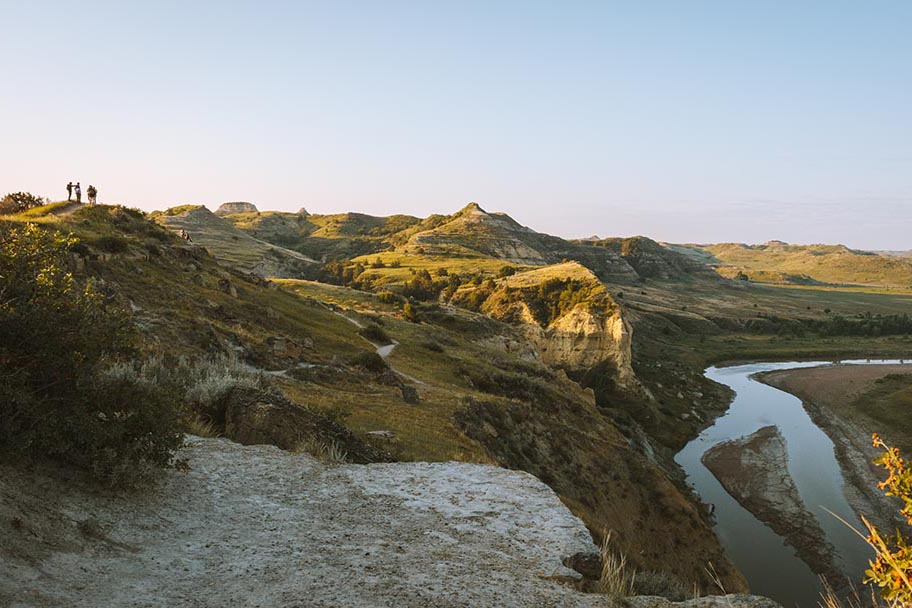
White Horse Hill National Game Preserve
In 1904 President Theodore Roosevelt set aside the land, today known as White Horse Hill, as America’s 8th National Park. In 1931 control of the park was transferred to the Fish and Wildlife Service and the land was redesignated as a wildlife refuge.
Today the refuge is home to bison, elk, deer, and prairie dogs and overlooks the shore of Devil’s Lake. Stop by the visitors center – open June through August – to learn more about the park’s history, wildlife, prairie flora, and the Spirit Lake Dakota people.
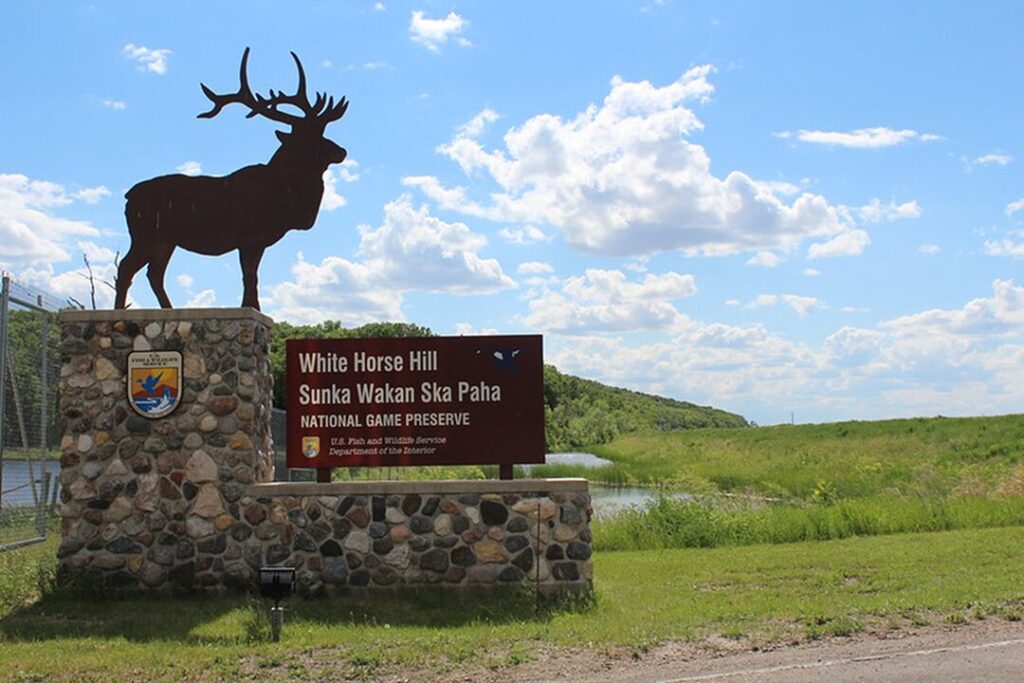
Explore More In ND
Where to Stay:
The historic Rough Riders Hotel, in Medora, ND offers a charming but luxurious place to stay while visiting the National park. Request a room in the historic section for a taste of what Teddy himself would have experienced, and stop by the lobby to explore the largest private collection of books on and by Roosevelt.
What to Eat:
Medora, ND offers a variety of restaurants for travelers. The iconic Pitchfork Steak Fondue provides an old-fashioned cowboy experience with unbeatable views of the badlands. Plus, Theodore Roosevelt himself will greet you at the door.
What Else to Do:
Stop by the Teddy Roosevelt Show where Joe Wiegand, the world’s top Roosevelt reprisor, takes the stage to tell stories of TR’s time living and ranching in the Badlands.
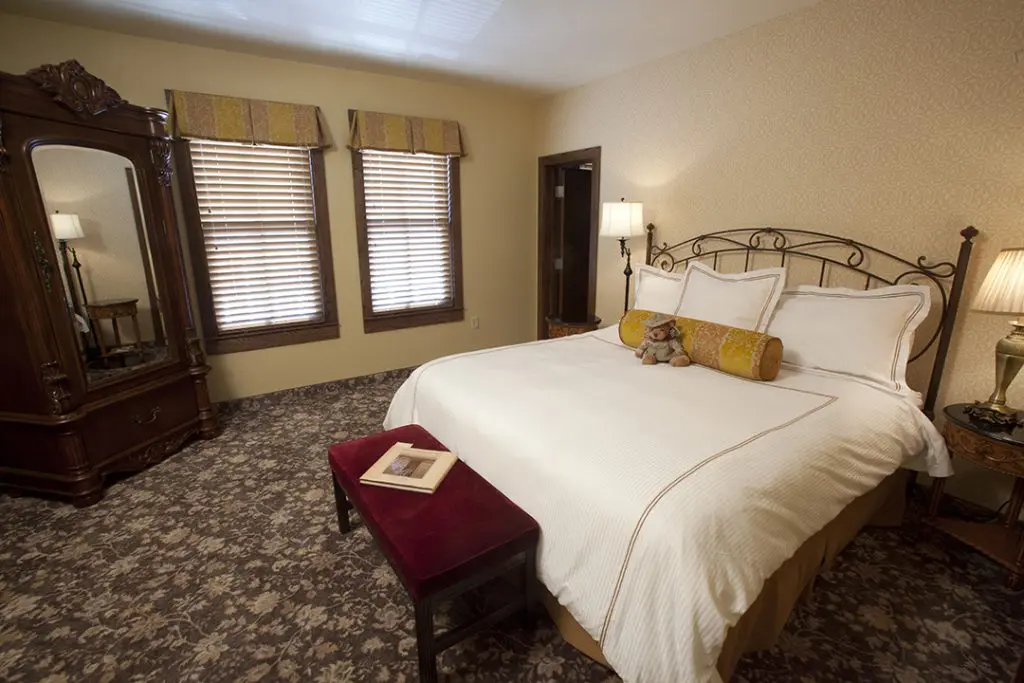
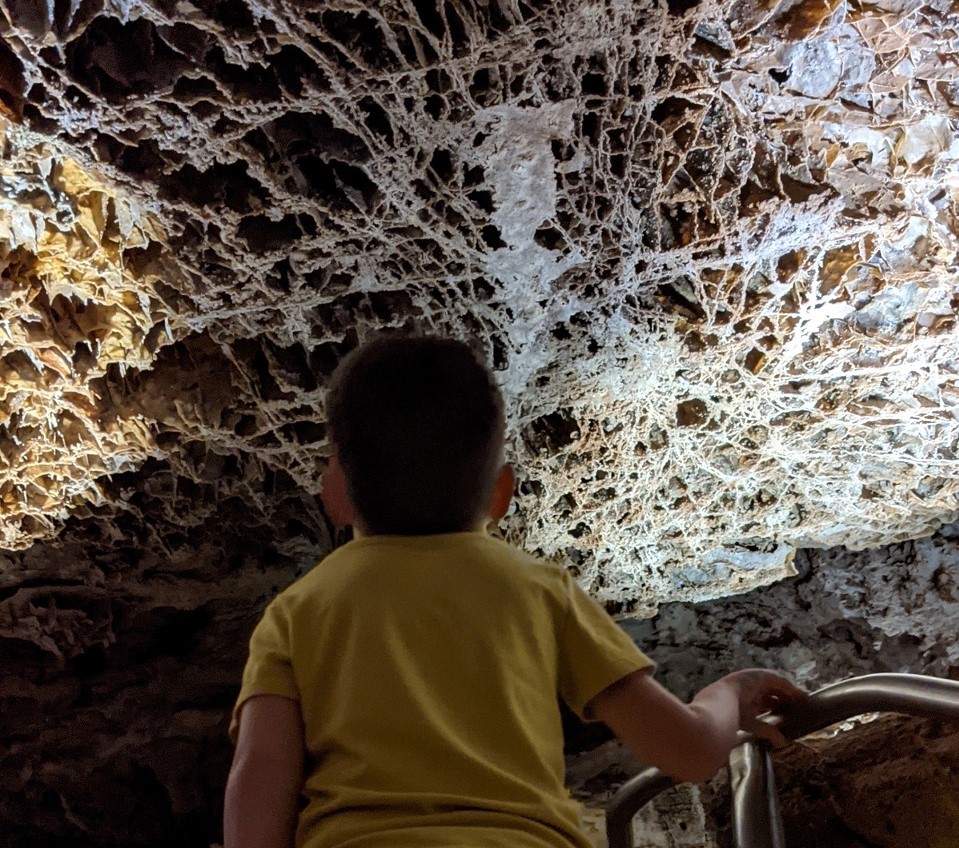
South Dakota
South Dakota
Wind Cave National Park
Wind Cave National Park was established in 1903 by Theodore Roosevelt as the United State’s 7th National Park. The park was set aside to preserve its vast cave system – the densest cave system in the world! – but today is also celebrated for its above-ground beauty. Visitors will want to plan time to explore both above and below ground.
To explore underground, Wind Cave operates five cave tours ranging from the easy Garden of Eden tour, to the adventurous Candlelight tour which lets visitors explore the cave as if it was 1889. Most tours operate on a first-come-first-served basis, so travelers should stop by the visitor’s center early to reserve their spot.
Above-ground explorers can take the short, 1-mile, Rankin Ridge hike through the beautiful Ponderosa Pines. On clear days the top of the ridge offers a view of neighboring Badlands National Park – another great stop while you’re in the area. Or if you’re looking to lead the “strenuous life” the Lookout Point and Centennial Trail Loop was rated amongst the best hikes in all national parks by Conde Nast Traveler.
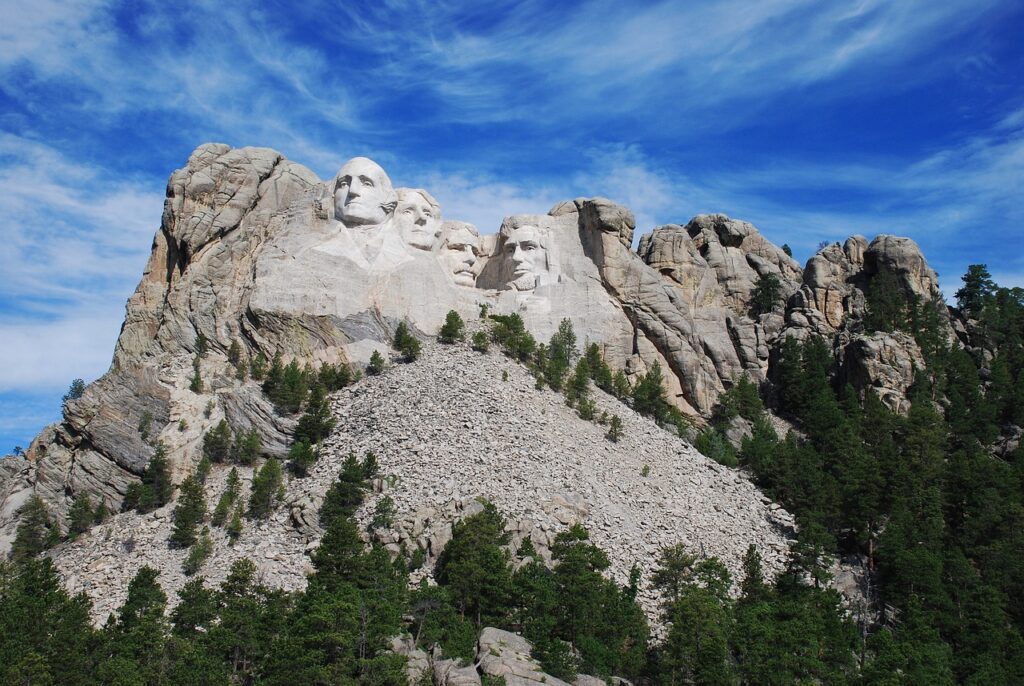
Mount Rushmore
Carved by Gutzon Borglum from 1927-1941, Mount Rushmore commemorates the legacy of four of America’s most influential figures, George Washington, Thomas Jefferson, Abraham Lincoln, and of course, Theodore Roosevelt. The national memorial tells the story of our country, from birth to growth, development, and preservation.
Many people speculate which of Theodore Roosevelt’s accomplishments earned his place in the monument. Throughout his time as president, he was instrumental in building the Panama Canal, linking the east to the west. His work ending corporate monopolies and fighting for workers’ rights earned him the moniker ‘the trust buster’. And his military and diplomatic efforts were many, including the commissioning of the great white fleet and negotiating the end of the Russo-Japanese war which earned him a noble prize.
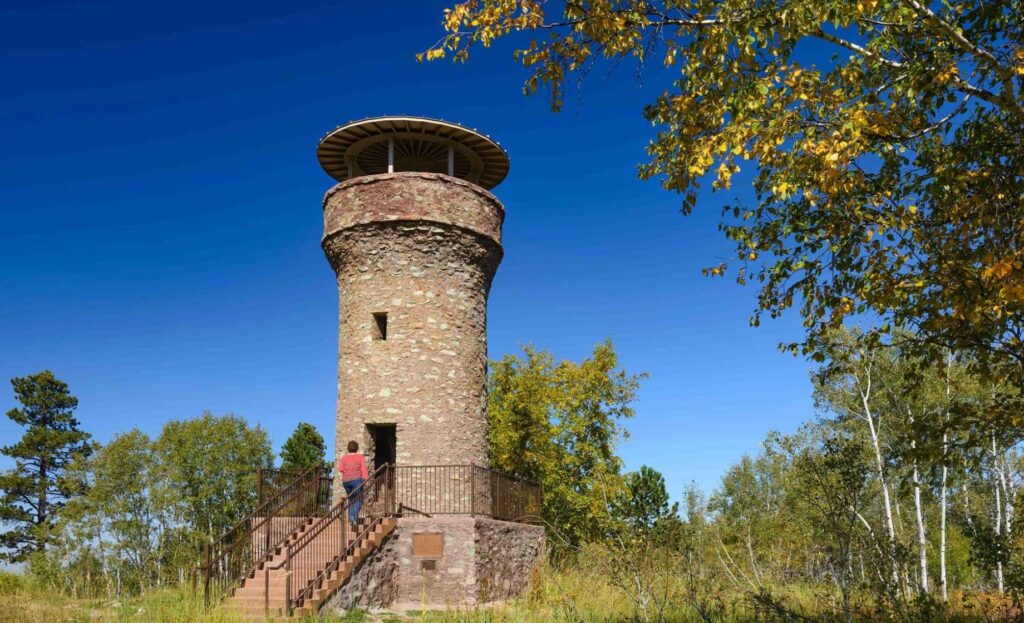
Friendship Tower – Mt. Roosevelt
This little-known Roosevelt landmark is a must-see piece of wild west history. In 1892, shortly after Dakota territory was split into North and South, Theodore Roosevelt met Seth Bullock while crossing the Belle Fourche River on horseback. This chance meeting was the start of a lifelong friendship between the soon-to-be ‘Cowboy President’ and the famed first sheriff of Deadwood.
Throughout their friendship, Roosevelt described Bullock as “a true Westerner, the finest type of frontiersman.” Upon Roosevelt’s death in 1919, Bullock erected a physical monument to their friendship, today known as Friendship Tower, outside of Deadwood, SD. Visitors can take a short hike to the tower to experience stunning panoramic views of the Black Hills – including a view of Mount Moriah Cemetary to the southeast, where at the end of his life Bullock requested that he be buried with a view of Friendship Tower.
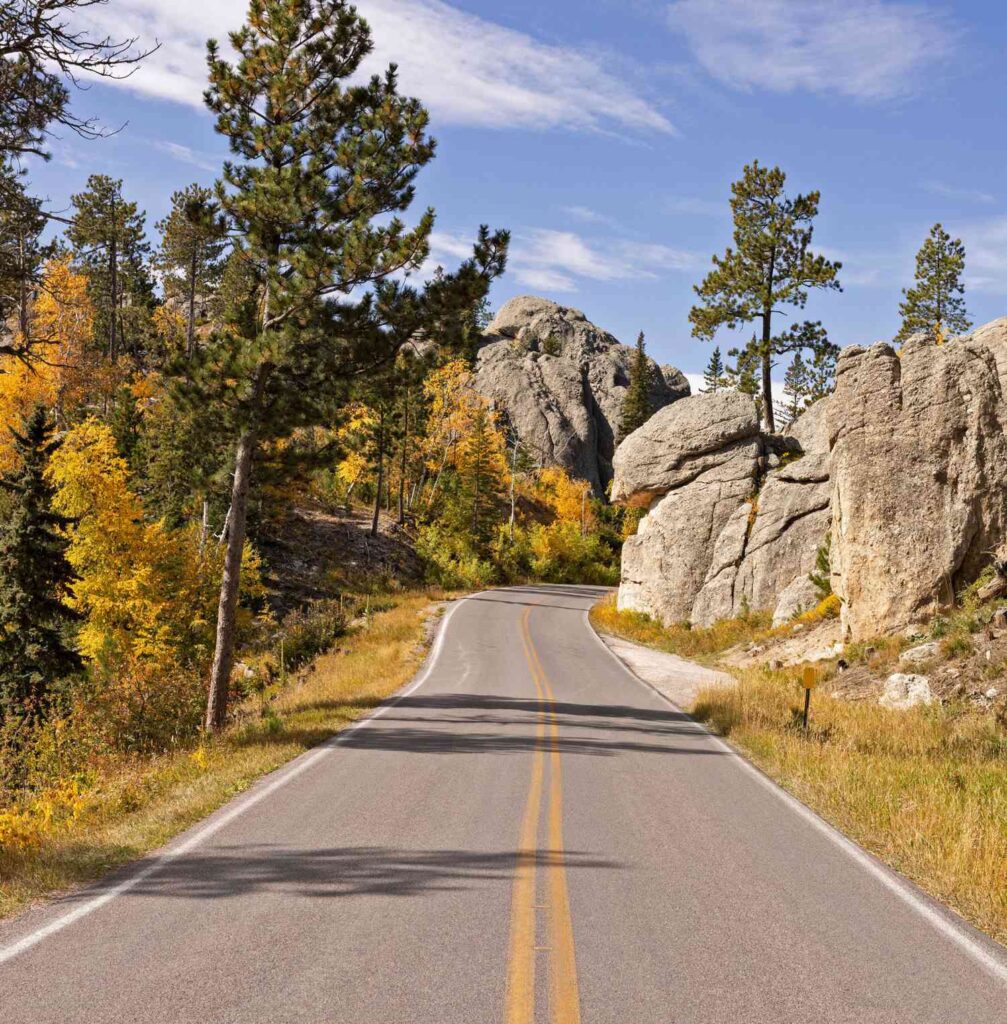
Explore More In SD
Where to Stay:
Centrally located in South Dakota’s Black Hills, minutes away from Mt Rushmore is K Bar S Lodge. This top-rated boutique hotel is the perfect base camp for exploring the area.
What to Eat:
Saloon #10 in Deadwood offers a taste of the past, with western artifacts and antiques from floor to ceiling, living history performances, and South Dakota’s largest whiskey selection.
What Else to Do:
The Black Hills of South Dakota have a whole lot of exploring to offer. Just east of the hills is Badlands National Park which offers an otherworldly beauty to outdoor adventurers. And Custer State Park is a great stop for travelers wanting to experience the heart of the Black Hills.
Wyoming
Wyoming
Devils Tower
Devils Tower was established in 1906 by Theodore Roosevelt as the first United States National Monument. Originally protected for its beauty, jutting up above the surrounding prairie, Devils tower is now studied for its fascinating geologic history. The tower is formed of rare igneous rock, phonolite porphyry, and is the largest example of columnar jointing in the world.
Visitors to Devils Tower can spend the day hiking, including the accessible 1.3-mile Tower Trail that circles the base of the tower. See if you can spot climbers scaling the joints up the tower, and stay up after dark to experience some of the best stargazing in the west.
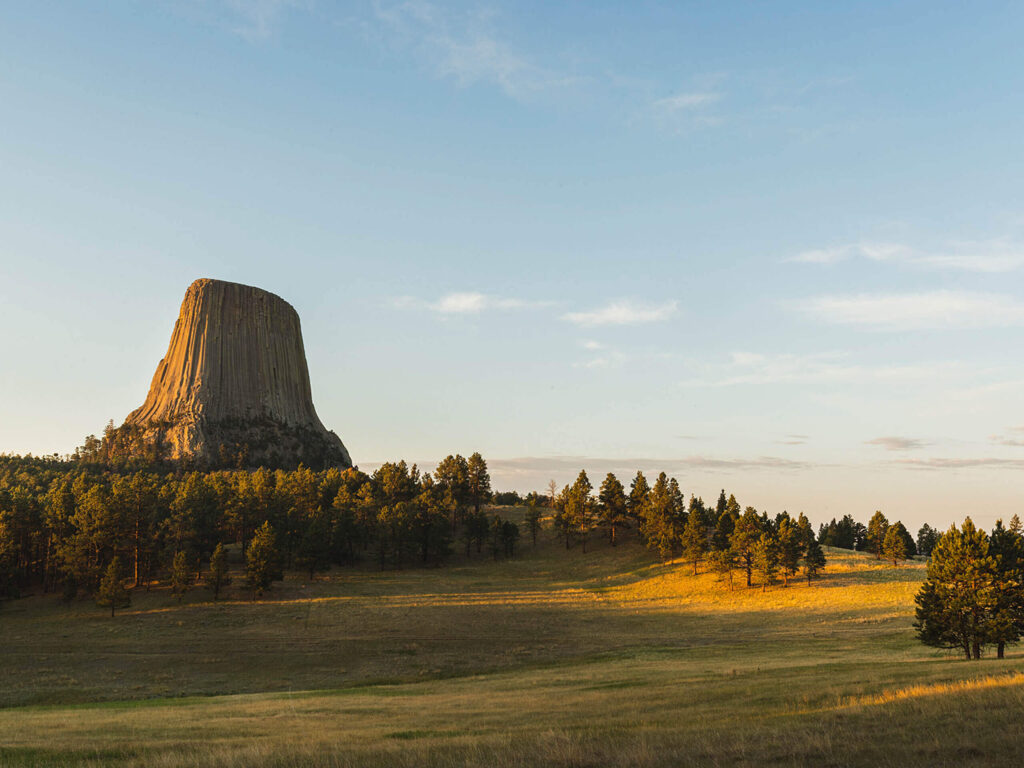
Yellowstone National Park
In 1903 Theodore Roosevelt returned to his beloved American West as president. On this grand presidential tour, ranging from Chicago to Los Angeles, Roosevelt split his time between giving speeches in frontier towns and escaping into the backcountry – ultimately spending two weeks camping in Yellowstone National Park.
Accompanied by famed naturalist writer John Burroughs and acting-superintendent Major John Pitcher, Teddy hiked strenuous distances, was thrilled by the wildlife, and thoroughly explored all corners of the park.
As his stay in Yellowstone came to a close, Roosevelt returned to Mammoth Hot Springs to speak at the cornerstone-laying ceremony for the arch at the park entrance, now known as Roosevelt Arch. In his speech, Roosevelt remarked, “The geysers, the extraordinary hot springs, the lakes, the mountains, the canyons, and cataracts unite to make this region something not wholly to be paralleled elsewhere on the globe. It must be kept for the benefit and enjoyment of all of us.”

Explore More In WY
Where to Stay:
Roosevelt Lodge Cabins, located within Yellowstone National Park, is built on the campsite once used by President Theodore Roosevelt himself. Cabins are just rustic enough to awaken your ‘old west spirit.’ Plus, you can explore the park on horseback or by stagecoach from the Roosevelt corral!
What to Eat:
On your way to Yellowstone stop by another famous cow town, Cody, Wyoming for a bite at Proprietress Market + Bar. Small plates, soups, salads, and snacks are served picnic-style on the patio.
What Else to Do:
Buffalo Bill Center of the West in Cody, WY, includes five museums with unique stories of the Great American West. Learn about Buffalo Bill and Annie Oakley, hear the stories of the Plains Indians, or explore the exhibits of the Cody Firearms museum.
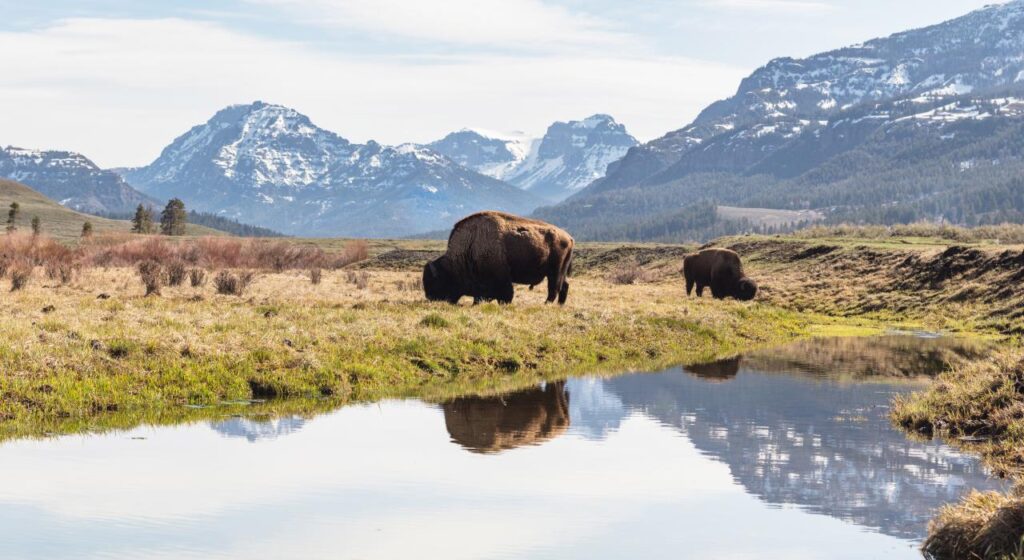
Roosevelt had a lifelong love of western cowboy culture. In 1883 he left New York to become a rancher and cowboy in Dakota Territory. Roosevelt’s experiences as a cowboy contributed to his rugged, individualistic personality and his leadership style. Roosevelt was known for his energetic and decisive leadership. His time in the West helped to shape these qualities.
Throughout his life, Teddy was a strong advocate for the protection and preservation of the natural environment. He was an avid outdoorsman and spent many years hunting, fishing, and camping in the western states. This experience gave him a deep appreciation for the beauty and majesty of the natural world, and he became convinced that it was important to protect and preserve the environment for future generations.
Beat Inflation & Travel Congestion at this National Park Paradise
Beat Inflation & Travel Congestion at this National Park Paradise
Originally published by Mikah Meyer on mikahmeyer.com | August 6, 2022
Looking for an affordable, low-traffic vacation this summer 2022? With inflation at record levels, and revenge travel causing congestion at seemingly every layover, that might sound like a tall tale.
But, with nearly 2/3 of summer left (the meteorological season ending on September 23), there’s still plenty of time to experience someplace wonderful. And one place where avoiding the above struggles is possible:
Madly in Love With the Maah Daah Hey
Madly in Love With the Maah Daah Hey
Have you ever loved something so much that you would walk 200 miles for it? Through heavy brush? With a push mower? Nick Ybarra has.
“It was here that the romance of my life began.” —Theodore Roosevelt
